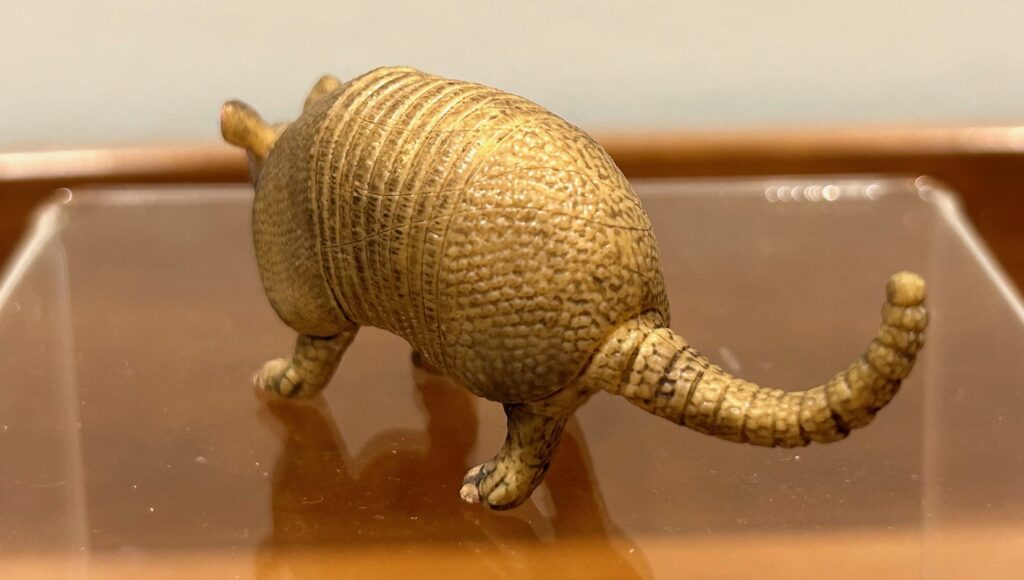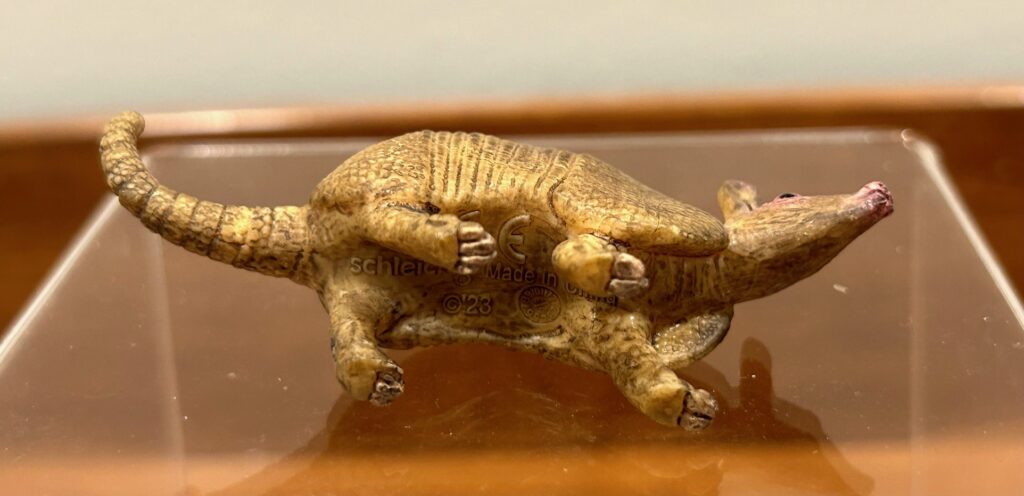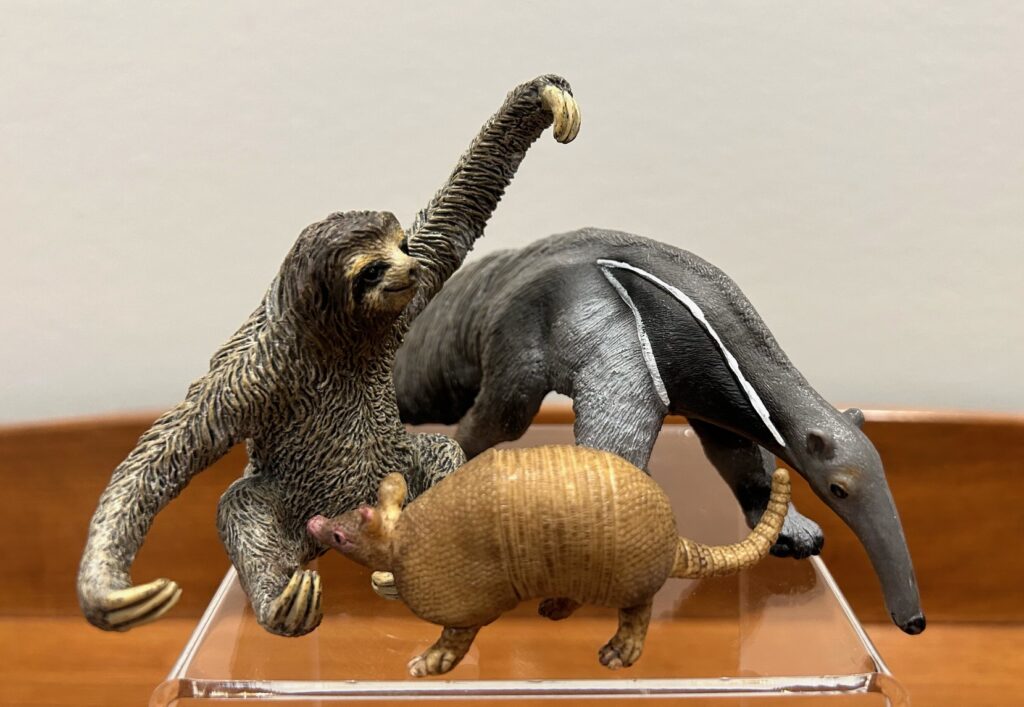Review and images by Suspsy; edited by bmathison1972
Armadillos, which are part of the superorder Xenarthra along with anteaters and sloths, are immediately recognizable by their tough armoured hides, which makes them almost seem more reptilian than mammalian. There are currently 21 recognized species, all native to the Americas, with the smallest and the largest being the pink fairy armadillo (Chlamyphorus truncatus) and the giant armadillo (Priodontes maximus) respectively. And we mustn’t forget that the mighty prehistoric glyptodonts were armadillos as well.

Schleich’s 2024 armadillo is a tiny toy that measures just 7.5 cm long. It is clearly a nine-banded armadillo (Dasypus novemcinctus), which is probably the most famous and definitely the most widespread member of its family. It is found in every South American country except Chile, all of Central America, and a large chunk of the southern United States (and its range is predicted to expand even further north as temperatures rise). They usually weigh between 2.5 and 6.5 kg, but can grow up to 10 kg.

This armadillo has been sculpted in a walking pose with its head turned to look to the right and its tail curled upwards. The perked ears and wide eyes make it look very alert, and indeed, armadillos tend to be skittish and jumpy animals. The main colour on this toy is light brown washed over with a darker shade to accentuate the skin texture. The dirty-looking claws are beige and light pink has been applied on the tip of the ears and nose and around the glossy black eyes.

For such a small toy, Schleich has done a solid job of replicating the bumpy, scale-like texture of the armadillo’s carapace. The signature nine bands are clearly visible and the armour on the tail is segmented. The underbelly is without armour, of course. Unlike its smaller relative the three-banded armadillo, the nine-banded species cannot roll into a ball to protect itself. Instead, it will attempt to flee or quickly dig a shallow trench and wedge itself in tightly. Its predators include wild dogs and cats, bears, crocodilians, and birds of prey.

The armadillo’s stout limbs end in large claws used for digging trenches and burrows, and for fighting amongst themselves. At first glance, it may appear that the front paws have only two large claws, but there are in fact smaller ones on either side, just not painted. The long snout with its pig-like nose helps it to locate worms, insects, arachnids, and other invertebrates hiding on or in the ground. Not shown on this toy is a long tongue, which it uses to lap up its prey just like its anteater relatives.

The Schleich armadillo is a pleasing little toy overall, and certainly not as common as the elephants, giraffes, big cats, dogs, and horses that one is far more likely to come across in toy stores. Recommended.

With it’s prehistoric kin:

Disclaimer: links to Ebay and Amazon on the AnimalToyBlog are affiliate links, so we make a small commission if you use them. Thanks for supporting us!




It’s great to finally have another decent nine-banded armadillo on the market. Instant purchase for me. Great review!
I agree. I already have the older Schleich armadillo, so I have no reason to pursue this one, but it’s nice to have a new model that is readily accessible for those that missed the earlier one!
Just like the older Schleich armadillo this one, also, has a very golden coloration when it should be gray. The sculpt is very nice and my only other ‘complaint’ would be that the tail’s raised/curved pose is a bit odd when in life the tail is typically held lower to the ground. 4-stars.